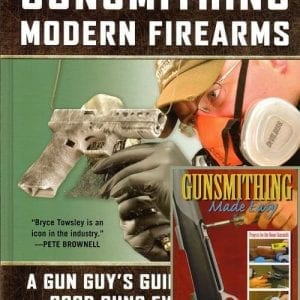 It was a long and rough day and when your head hit the pillow you were out instantly. Hours later, you are startled out of a deep sleep to the sound of your front door being kicked in. Disoriented and confused, you listen as your dog barks hysterically and then whimpers in pain. The silence that follows is terrifying.
It was a long and rough day and when your head hit the pillow you were out instantly. Hours later, you are startled out of a deep sleep to the sound of your front door being kicked in. Disoriented and confused, you listen as your dog barks hysterically and then whimpers in pain. The silence that follows is terrifying.
You grab the phone and call 911, but know the response time will be far too long. Like they say, when seconds count, the police are only minutes away.
Then, you hear the door to your daughter’s room open and she starts screaming.
This is when you find out if you are a sheep, or a sheepdog. Sure you could take the advice of the sheep and lock your door, wait for the police, but who would do that? You are going to your child’s assistance and what you bring with you will make all the difference in how it ends.
The best way to survive this thing is to use stealth and surprise. Don’t yell out, “I have a gun” or even think about a warning shot. The first time he realizes you are there, your gun should be pointed at his center of mass and your finger should be on the trigger. If he is attempting to hurt your daughter, his first clue should be the hole through his vitals, followed quickly with another.
Letting him know you are there and have a gun just gives him an advantage and puts you in danger. If he eliminates you from the equation, you have failed yourself and your child.
Which gun? Well, a handgun can be easily manipulated in tight quarters and can be kept back close to your body so that the bad guy can’t grab it as easily, or move past the muzzle. Even if the bad guy is able to attack you, a handgun can be used during a hand to hand physical close quarters confrontation, but typically a long gun cannot. Also, a handgun keeps one hand free to fight, or to open doors or operate light switches.
A bedside handgun might well be your carry gun. Or it might be a handgun dedicated to bedside use. Regardless, there are things to consider. First is caliber. I am of the belief that it’s far better to be over-gunned than under-gunned. The goal here is not to make it a fair fight, or to prove what a great shot you are, the goal is to survive.
The argument for a smaller cartridge is almost always “shot placement” which is a great theory, but flawed logic. Shot placement is important, but it’s also elusive. When you are stressed, the lighting is poor and the target is moving, the idea of “shooting him right in the eye” is suddenly a lot tougher than it sounds.
Not convinced? Try this, register for a USPSA match with your defensive pistol. The stress of competition is as close as most civilians can come to the stress of a fight, except that in a fight it is multiplied exponentially. So, if you do poorly dealing with stress in a match, expect that to escalate in a fight.
If you win first place and every shot is centered in the “A” zone, then a small cartridge might be for you. But, some shots are not in the “A” zone, and trust me they won’t be, consider that in a fight for your life you may only get one shot. What if that’s the one that hits the bad guy in a marginal area? A bigger hole and more energy transfer sounds pretty good now, right? A club is always better than a switch.
I like the idea of any handgun as long as it starts with a four. A bigger bullet simply does more damage. If the shot is not perfectly placed, a bigger bullet has higher odds of an incapacitating wound than a small bullet. A .40 S&W or .45 ACP is a far better fight stopper than a .380 ACP or even the 9mm.
Think you need the high magazine capacity of a 9mm? Think again, that’s Hollywood. This will be over in a few shots. Besides, you can get a .40 S&W like the Smith & Wesson M&P with a 15 round magazine which is as many shots as a lot of high-cap nines. You know, for when the zombies show up..



